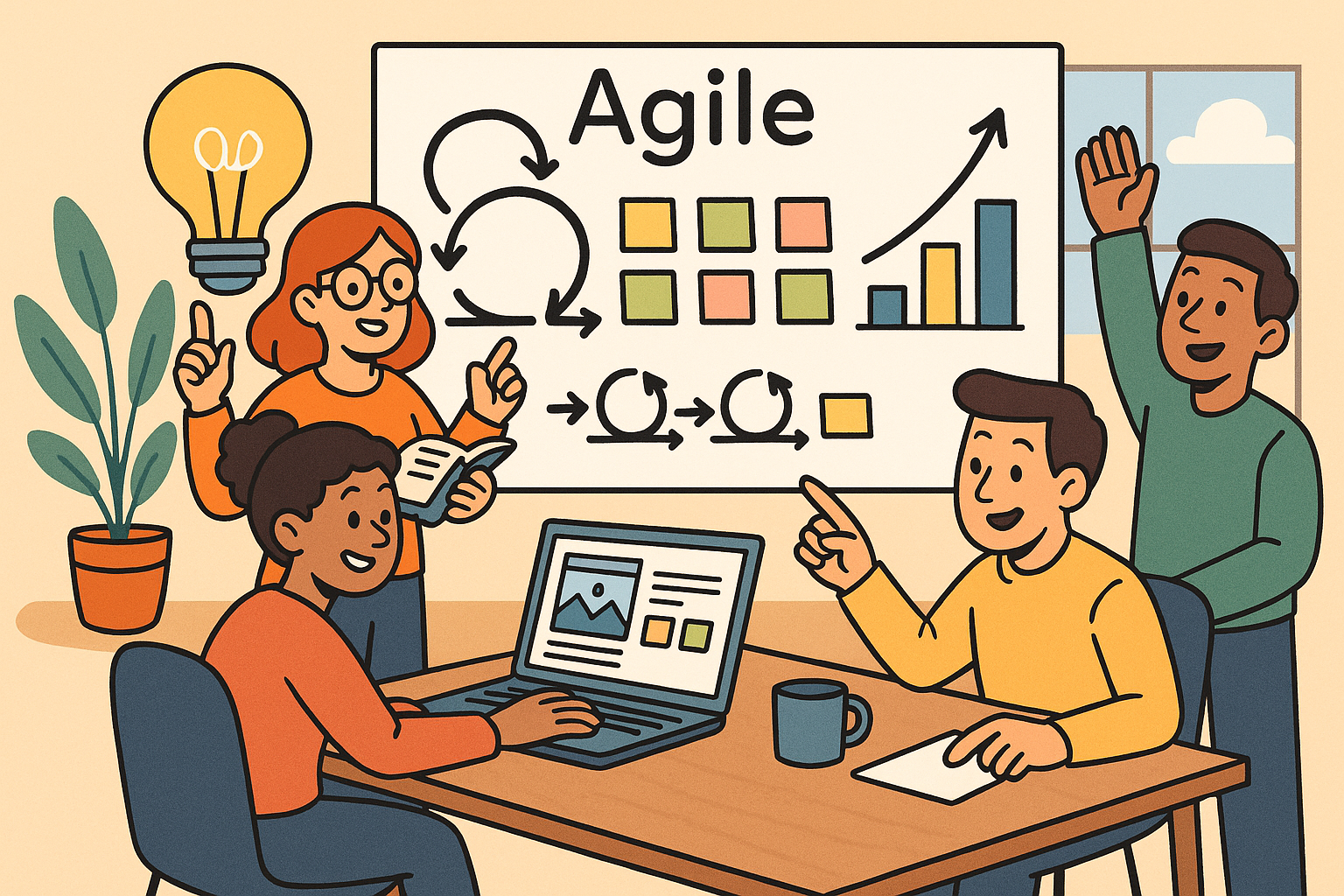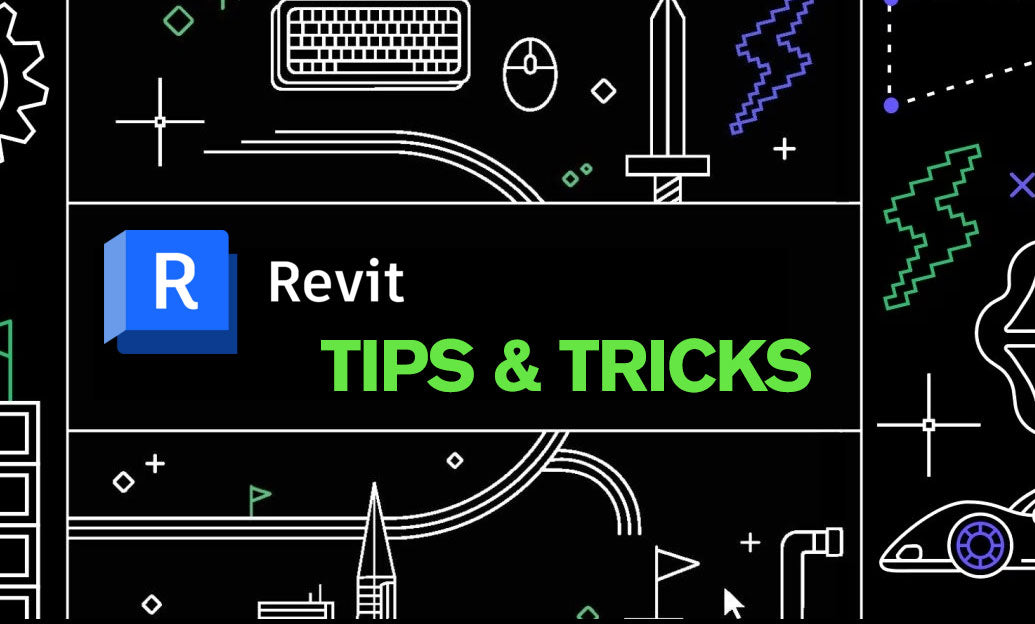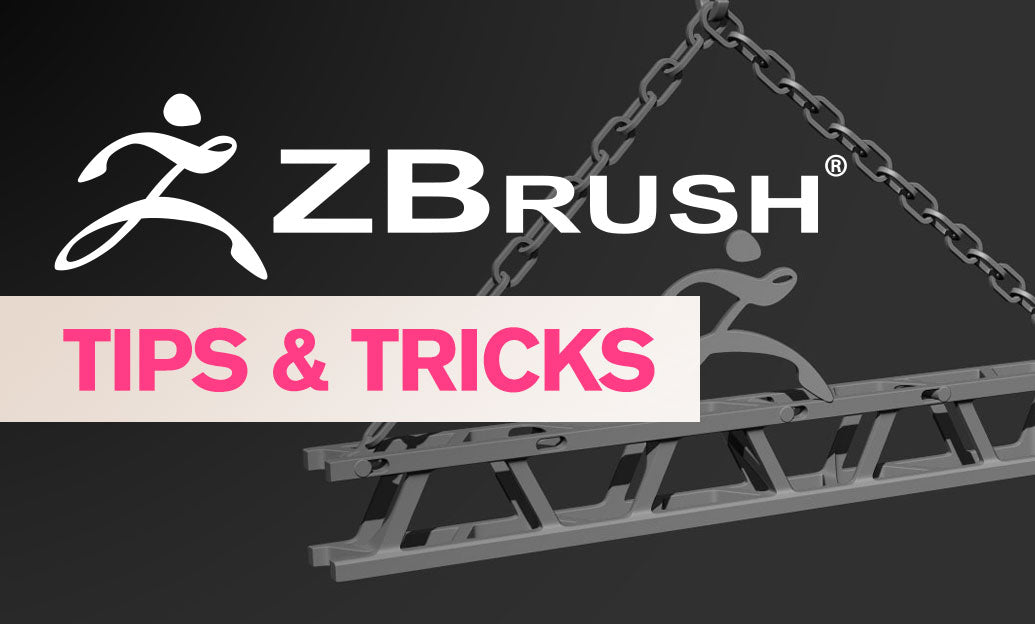Your Cart is Empty
Customer Testimonials
-
"Great customer service. The folks at Novedge were super helpful in navigating a somewhat complicated order including software upgrades and serial numbers in various stages of inactivity. They were friendly and helpful throughout the process.."
Ruben Ruckmark
"Quick & very helpful. We have been using Novedge for years and are very happy with their quick service when we need to make a purchase and excellent support resolving any issues."
Will Woodson
"Scott is the best. He reminds me about subscriptions dates, guides me in the correct direction for updates. He always responds promptly to me. He is literally the reason I continue to work with Novedge and will do so in the future."
Edward Mchugh
"Calvin Lok is “the man”. After my purchase of Sketchup 2021, he called me and provided step-by-step instructions to ease me through difficulties I was having with the setup of my new software."
Mike Borzage
Agile Methodologies Transforming Design Workflows for Innovation and Efficiency
July 30, 2025 9 min read


Laying the Foundation for Agile in Design Workflows
Agile methodologies have redefined the way design teams approach creative problem-solving, emphasizing flexibility, iterative progress, and a direct focus on client needs. At the core, agile practices rest on principles such as close team collaboration, regular feedback cycles, and iterative development processes that ensure that the final product evolves in alignment with real-world requirements. In modern design environments, where rapid technological innovation requires teams to deliver high-quality outputs under tight deadlines, agile becomes not only an efficient strategy but also a necessity that drives continuous improvement. The traditional approach to design often follows linear, waterfall processes where stages are completed sequentially; in contrast, agile workflows promote a more dynamic process that adapts to changes in scope, design revisions, and client feedback. The key distinction here lies in the **iterative design cycle**, which allows for continuous tweaking, testing, and refinement.
To better understand the significance of agile in design, consider the following practical elements of agile methodologies:
- Iterative Development: Breaking down the design process into manageable sprints.
- Continuous Feedback: Incorporating client and stakeholder inputs at various stages rather than waiting until final delivery.
- Collaborative Environment: Fostering an environment where cross-functional teams work closely together to leverage diverse expertise.
Core Agile Principles and Their Relativity to Design
Significant emphasis is placed on responsibility distribution, transparency, and stakeholder collaboration. These principles not only reframe the conversation around agile but also set the stage for a firm contrast to older, more rigid systems prevalent in many design studios. Agile methodologies promote frequent and structured communication between team members and stakeholders via daily stand-ups, sprint planning, and retrospective meetings. Such routines enable the design process to be modified as needed, a stark contrast to the traditional methods where final outputs were locked in early. The iterative nature of agile allows design teams to capture evolving market dynamics, rapid technological changes, and client insights on an ongoing basis. Furthermore, agile principles encourage distributed decision-making, whereby decisions emerge from this dynamic interplay between designers, product managers, and even clients. This structure fosters a culture of shared ownership that often results in designs that are not only innovative but also highly responsive to real-time needs.
Adapting Agile Frameworks to Design Processes
Popular agile frameworks, such as Scrum and Kanban, hold substantial promise for the design industry by offering systems that break projects into manageable pieces. In design processes, the application of these frameworks results in a more structured and efficient workflow that's conducive to experimentation and early error detection. With the Scrum framework, for example, design teams organize around sprints, where clearly defined goals are set, work is segmented into tasks, and priorities are established via backlogs. This framework is crucial when teams require rapid prototyping and iterative testing phases. On the other hand, the Kanban framework prioritizes visual management and flow optimization. These methods provide a dual advantage: they focus on continuous improvement of tasks by exposing bottlenecks and inefficiencies, while also promoting fast execution and timely feedback. The **iterative design cycle** is particularly vital in ensuring that each phase of a project benefits from insights derived during prior iterations, leading to a robust final product.
Design professionals embracing agile frameworks often combine elements of both Scrum and Kanban in what is sometimes referred to as a Scrumban hybrid. This approach supports rapid prototyping while ensuring meticulous planning and review stages. Practical techniques for integrating agile practices into design software tools include:
- Task Management Integration: Employing agile boards that synchronize with design software to track progress and resource allocation.
- Real-time Collaboration: Utilization of cloud-based platforms that offer shared workspaces, allowing team members to simultaneously review and modify designs.
- Automated Feedback Loops: Implementing tools that capture user feedback instantly and translate this information into actionable design tasks.
Embracing Iterative Techniques for Modern Design
A central aspect of agile when applied to design is the iterative process that encourages rapid prototyping, testing, and refining. Rather than waiting for a fully baked solution, design teams now build prototypes at various stages, gather feedback, and iterate based on practical input from both internal stakeholders and end-users. This method minimizes the risk of costly revisions late in the development cycle. Additionally, in environments where market demands are continuously changing, maintaining an agile mindset and leveraging iterative design cycles ensures that solutions are always aligned with current market expectations. Over time, this continuous loop of design, feedback, and iteration results in outputs that are both innovative and resilient in the face of changing trends and technologies.
Implementing Agile Practices in Design Teams
For design teams to effectively reap the benefits of agile methodologies, a combination of cultural change, robust project management protocols, and the use of specialized software is essential. The transformation process begins with establishing key strategies such as daily stand-up meetings that ensure every team member is aligned on objectives, as well as sprint planning sessions that help in prioritizing tasks using clearly defined backlogs. The daily check-ins foster accountability and keep projects on track by ensuring that everyone is aware of progress and potential issues. Moreover, regular sprint retrospectives provide a structured forum for reflecting on what worked well and identifying areas for improvement, resulting in continuously refined workflows. The clear demarcation of roles, responsibilities, and collaborative milestones is essential for achieving constant progress while nurturing creativity and flexibility within the design team environment.
In addition to process changes, the adoption of agile practices requires leveraging the right toolset tailored for agile project management. These include:
- Digital Kanban Boards: Tools that display task progress visually, enabling teams to manage and re-prioritize effectively.
- Integrated Communication Platforms: Software that facilitates effective real-time updates, seamless file sharing, and collaborative editing.
- Customizable Project Templates: These templates are designed specifically for design projects to ensure that all iterative tasks are recorded and addressed in an agile framework.
Strategies for Agile Transformation in Design Environments
There are several key strategies that help ensure a successful agile transformation within design teams. A prominent strategy is the implementation of daily stand-ups, which keep everyone on the same page regarding priorities and ongoing challenges. Regular check-ins foster transparency, ensuring that the entire team is aware of individual progress and potential pitfalls. Furthermore, sprint planning sessions and well-maintained backlogs provide clear objectives and a structured method for breaking down complex design projects into manageable tasks. Regular retrospectives play a crucial role by enabling teams to reflect on the outcomes of their design sprints and refine processes for future iterations. Additionally, strong leadership and a clear vision are essential to guide the team through the transformation. Leaders in design firms often prioritize creating an environment where failures are seen as opportunities for learning. This approach encourages experimentation while ensuring that creative freedom remains balanced with the practical demands of structured agile practices.
Benefits, Challenges, and Future Outlook
The integration of agile methodologies into design workflows has delivered multiple benefits that have significantly reshaped modern design practices. One of the foremost advantages is the ability to conduct faster iterations, which enhances responsiveness to client feedback and market dynamics. This means that design teams can quickly pivot when market demands shift or when new ideas emerge, ultimately resulting in designs that are more relevant and forward-thinking. In parallel, the collaborative nature of agile encourages cross-disciplinary interaction, fostering an environment where diverse perspectives enhance creativity and lead to innovative design solutions. Furthermore, agile practices empower teams to stay adaptive, enabling them to keep pace with rapid technological advancements and changing industry standards. The practicality of agile is further underscored by its compatibility with **continuous integration tools** and other project management software, establishing it as a frontrunner in evolving design practices.
However, transitioning to agile is not without its challenges. Many teams face initial resistance from members who are accustomed to traditional design workflows characterized by inflexible roles and hierarchical processes. Additionally, integrating agile practices into legacy systems can pose significant hurdles. Traditional design workflows often rely on linear, step-by-step approaches, and aligning these with agile methods requires substantial changes in how resources and responsibilities are managed. Moreover, while agile promotes structured processes, it must also carefully balance creative freedom—ensuring that designers do not feel constricted by the imposed structure. The following bulleted points summarize the primary challenges:
- Resistance to Change: Transitioning from established methodologies can initially slow down productivity.
- Integration with Legacy Systems: Aligning agile practices with existing tools and workflows is often complex.
- Balancing Structure and Creativity: Too much process can limit creative exploration, while too little can jeopardize project accountability.
Future Trends and the Evolving Role of Agile in Design
Looking ahead, agile methodologies are expected to continue evolving alongside the advancements in design technology. Emerging trends such as the integration of artificial intelligence, augmented reality, and sophisticated data analytics into design workflows are reshaping how agile is implemented in the space. As these technologies become more integral to the design process, agile frameworks will likely evolve to accommodate greater levels of automation and predictive analytics, creating an environment where continuous refinement is not only possible but optimized. The role of agile in design is becoming increasingly significant in nurturing a culture of innovation, where iterative improvement and proactive feedback loops instill resilience and adaptability. In essence, the future of design hinges on balancing creativity with strategic planning—a balance that agile methodologies are uniquely positioned to maintain. The evolving landscape promises enhanced collaboration through real-time communication tools and more robust project tracking solutions, ensuring that design teams remain competitive and responsive in a fast-paced market.
In summary, agile methodologies not only bring efficiency and structured practices to design workflows, but they also provide a scalable and responsive framework that anticipates and adapts to change. From faster iterations to improved client collaboration and smoother integration with modern design tools, the agile approach is transforming how design is executed. As new challenges and trends emerge, design teams must continue to harness and refine agile techniques, ensuring that they remain at the forefront of innovation while delivering high-quality, client-centric results.
Conclusion
In conclusion, agile methodologies offer transformational benefits when ingrained into design workflows. The streamlined integration of iterative development, rapid prototyping, and continuous feedback not only enhances overall efficiency but also bolsters creative freedom in modern design processes. Adopting agile practices requires strategic planning, dedicated leadership, and the right digital tools to facilitate smooth transitions and overcome the challenges associated with legacy systems and resistance to change. By implementing regular sprints, daily stand-ups, retrospective meetings, and structured backlogs, design teams create an environment of accountability, collaboration, and rapid innovation. This transformation is critical for businesses aiming to keep pace with the dynamic demands of the market while ensuring that the creative essence of design remains unhampered.
Key takeaways include:
- Efficiency through Iteration: Regularly updated workflows lead to faster market responsiveness.
- Collaborative Innovation: Increased team collaboration fosters diverse ideas and creative problem-solving.
- Adaptive Processes: Agile practices enable teams to be nimble, successfully integrating client feedback and new technological trends.
Ultimately, the future of design lies in the continuous exploration of agile techniques, ensuring that creative teams remain competitive, agile, and ever-responsive in today’s fast-paced environment. Whether you are refining your existing processes or implementing agile methods for the first time, staying informed on emerging trends and harnessing the right project management tools will be crucial to maintaining an innovative edge. The ongoing journey towards agile excellence in design is a testament to the importance of marrying methodological rigor with creative spontaneity—a synergy that is critical for success in today’s dynamic design landscape.
Also in Design News

Cinema 4D Tip: Tiered Cinema 4D Render Presets with Tokenized Outputs
December 16, 2025 2 min read
Read More
Revit Tip: Duct Routing Best Practices and Fabrication Workflow
December 16, 2025 2 min read
Read More
ZBrush Tip: GPU-Optimized ZBrush and Redshift Workflow for High-Poly Scenes
December 16, 2025 2 min read
Read MoreSubscribe
Sign up to get the latest on sales, new releases and more …


